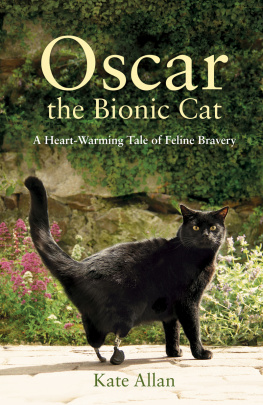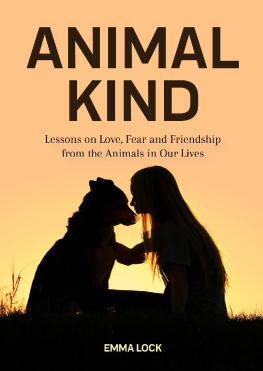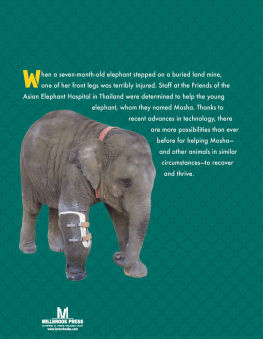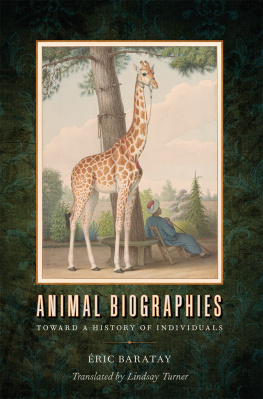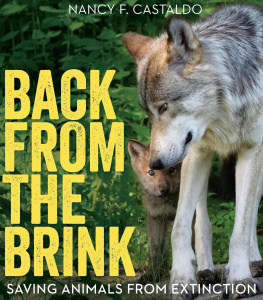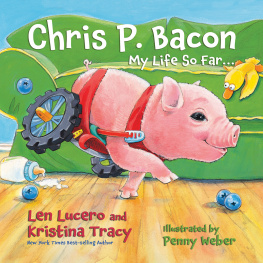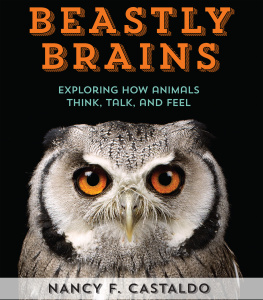Copyright 2017 by Nancy Furstinger
All rights reserved. For information about permission to reproduce selections from this book, write to or to Permissions, Houghton Mifflin Harcourt Publishing Company, 3 Park Avenue, 19th Floor, New York, New York 10016.
www.hmhco.com
Cover image OrthoPets
Cover design by Andrea Miller
The Library of Congress has cataloged the print edition as follows:
Names: Furstinger, Nancy, author.
Title: Unstoppable : true stories of amazing bionic animals / Nancy Furstinger.
Description: Boston ; New York : Houghton Mifflin Harcourt, [2017]
Identifiers: LCCN 2016038370 | ISBN 9780544879669 (hardcover)
Subjects: LCSH: Veterinary surgeryJuvenile literature. | Domestic animalsSurgeryJuvenile literature. | Artificial LimbsJuvenile literature. | Prosthesis-Juvenile literature. | BionicsJuvenile literature.
Classification: LCC SF911.F96 2017 | DDC 636.089/7dc23
LC record available at https://lccn.loc.gov/2016038370
eISBN 978-1-328-82898-9
v1.0917
For my compassionate cousins:
Kathy Morgan and Dawn Brownlee-Tomassoobviously we are related!
And for all the inspiring animals and their loving caregivers and prosthetists
N.F.
Introduction
Attitude is a little thing that makes a big difference.
Winston Churchill
A ll the animals in this book inspire us with their gumption. They have strong will and determination, proving that its possible to conquer lifes obstacles. The wild and domestic species profiled from around the world dont let their limitations get in the way of living. These uplifting stories show that physically challenged animals can adapt to almost any circumstance. They celebrate what it means to be considered different, and they demonstrate that theres no such thing as normal. Behind each animal is a team of dedicated rescuers, compassionate veterinarians, and orthotic and prosthetic professionals armed with cutting-edge technological advances.
Theyve created custom-designed wheelchairs and prosthetic limbs, tails, fins, flippers, and beaks to replace missing or nonworking body parts. In the process, theyve given these specially abled animals a second chance by improving their mobility and their quality of life.
Many of these medical miracles have crossed over from human medicine, revolutionizing veterinary medicine. Conversely, some animal medical advances are benefiting humans. Sharing progressive technologies can be mutually beneficial to all species!
Today, pioneering innovations are helping our two- and fourlegged animal and human friends. Sounding as if it is straight out of science fiction, 3D printing allows researchers to precisely design and produce bionic body parts. Another fusion of technologies offering options for human and animal amputees is the science of osseointegration. This alternative way of attaching a prosthetic limb uses a titanium implant, inserted into the residual limb, which gradually becomes part of the bone.
Amazing inventions, such as robotic prosthetic limbs controlled by thought, are evolving at a rapid pace. More incredible discoveries are on the way, making anything possible for bionic 4 animals of the future!
THE COMEBACK ANIMALS
Albie, Felix, and Fawn
Finding Strength in Their Differences at a Farm Sanctuary
F ollow Rescue Road as it winds through Woodstock Farm Sanctuary in High Falls, New York, and you might spot a cow sporting a pink leg brace, a goat cruising around in a wheelchair, and a sheep cavorting with his flock on a prosthetic leg. Nothing, not even a missing limb, stops the animals who live on this storybook farm from savoring life without limitations. Here, the tales have happy endings; in fact, the close to 350 animals who live at the 150-acre sanctuary have all triumphed over sad beginnings.
Albie, a shaggy white goat named after the compassionate philosopher and humanitarian Albert Schweitzer, was just a kid when he escaped from a slaughterhouse in New York City. Gashes etched Albies legs. Someone had hogtied the tiny goat, binding together all four of his legs so that he could be transported to slaughter.
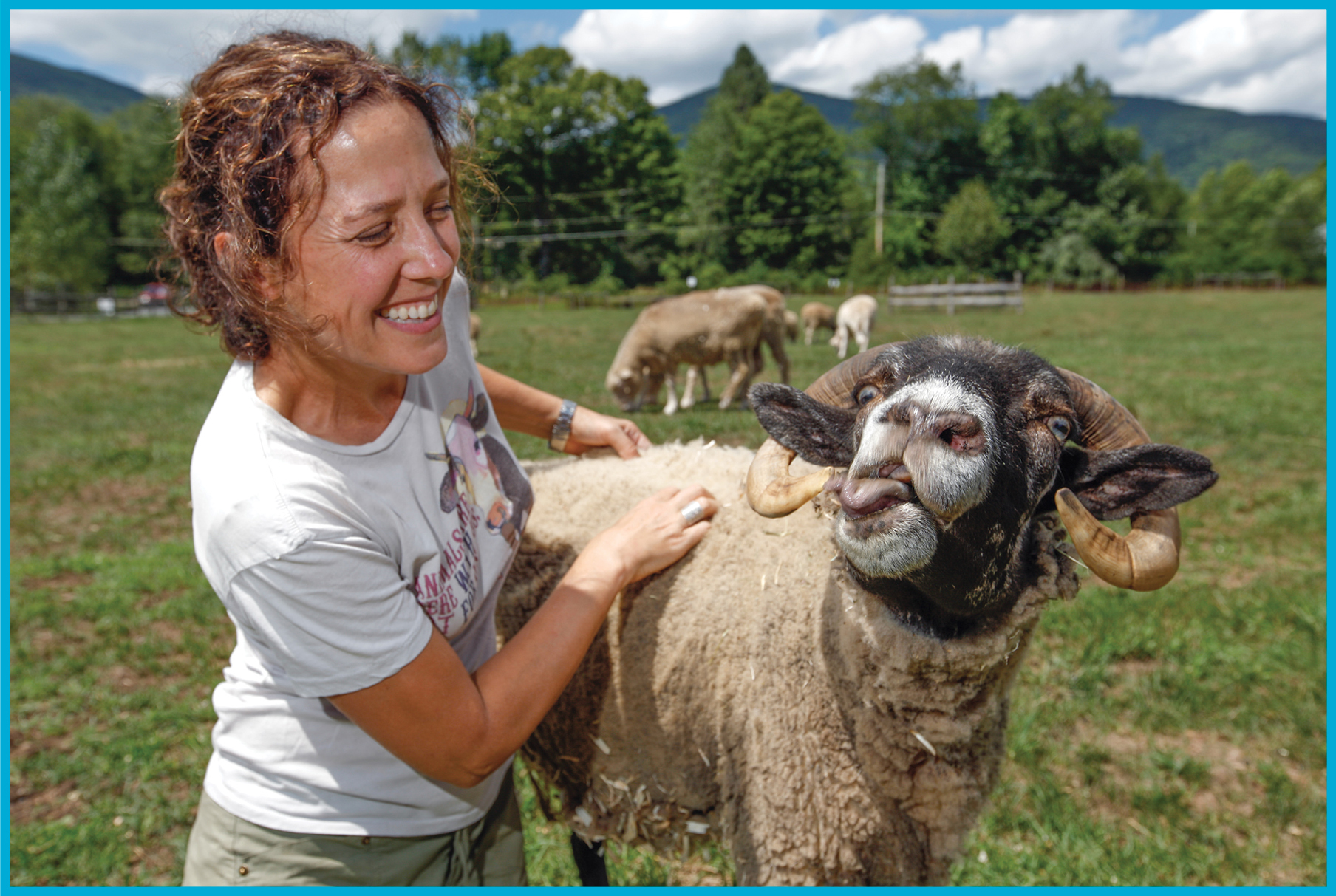
JENNY BROWN, COFOUNDER OF THE WOODSTOCK FARM SANCTUARY, SCRATCHES DEVLIN, A RAM WHO SURVIVED A HUGE HOARDING CASE IN PENNSYLVANIA.
Then Albie got his second chance. Police grabbed the roaming goat and took him to a city animal shelter. The staff knew just whom to contact: Jenny Brown. If animals are the stars at Woodstock Farm Sanctuary, Jenny is their leading lady. The sanctuary cofounder started welcoming animals to her haven in 2004. Along with her husband, Doug Abel, and their staff and volunteers, Jenny rescues, rehabilitates, and cares for farm animal refugees.
Jenny nursed Albie back to health, but his front leg refused to heal. The tight binding had cut off the goats circulation, causing his leg to become badly infected and his hoof to crumble. Jenny made the difficult decision to have his leg amputated just above the knee. Now two amputees lived at the sanctuary: Albie and Jenny.
At the age of ten, Jenny lost part of her right leg due to bone cancer. She wears a prosthetic leg that hasnt stopped her from actively running her sanctuary. Its a leg, not a lobotomy, Jenny emphasizes as we walk through the farm with her three-legged dog, Sophie, racing ahead of us. Her prosthetic leg changed her life, and she wanted nothing less for Albie. I know the challenges that can come from missing a limb, and I also know whats available in technology that could help improve his life, she said.
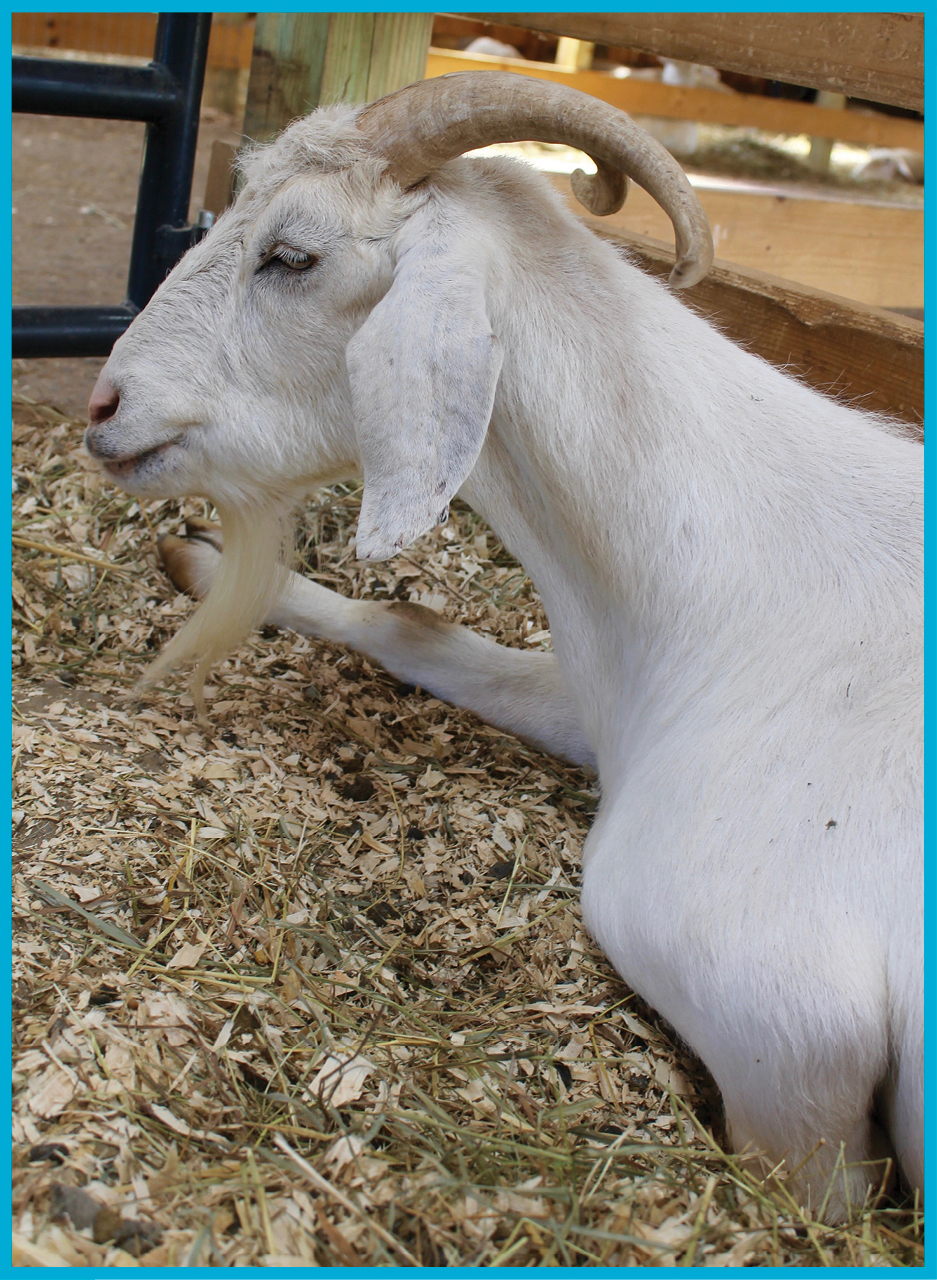
ALBIE RELAXES IN THE GOAT AND SHEEP BARN
So Jenny took a bold step and asked her own certified prosthetist, Erik J. Tompkins, to craft a leg for the little goat. A prosthetist is a health professional who is specially trained to work with prosthetics, but even Erik admitted that he wasnt an expert on fitting animals with artificial limbs, and the task was even more complicated because goats have hooves. Its like theyre always wearing little high-heeled shoes, said Jenny, adding that this makes their skeletons different from those of most animals.
Six months after Albie entered the sanctuary, he was walking on four legs! But the active young goat continued to face challenges. As Albie grew, he went through a series of artificial legs, but he managed to wiggle out of each one of them. Because the goats amputation was above the knee, nothing kept the leg onnot harnesses, straps, or special liners. Would Albie have to go back to hobbling around on three legs? Some animals, such as dogs, can maneuver on three legs; however, goats arent anatomically designed to adjust to life with a missing limb. Without the use of four legs, Albies mobility would be challenged, probably causing damage to his spine and his opposite leg. What could be done for him?
As Dr. Tompkins and Jenny brainstormed different ideas to solve Albies dilemma, Woodstock Farm Sanctuary started welcoming other physically challenged animals. Like Albie, another baby animal being raised for slaughter desperately needed rescuing. A predator snuck into a sheep farm, grabbed a young lamb, and chewed off part of his left rear leg. The lamb escaped but received no vet care, as he was destined for the dinner table. Fortunately, a farm worker brought the lamb, whom Jenny named Felix, to the sanctuary. Jenny and Doug bottle-fed the lamb, and he lived in their house as he healed.



